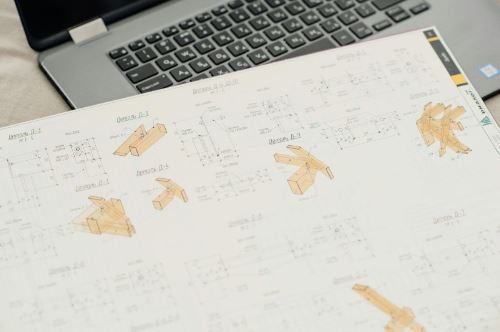Quantum computing, a revolutionary technology that harnesses the principles of quantum mechanics, is poised to transform various industries, including finance.
One promising application lies in the realm of crypto trading, where the ability to process vast amounts of data and identify complex patterns can significantly enhance investment strategies.
Solid Return, a subset of quantum computing, leverages quantum algorithms and hardware to tackle complex problems that are beyond the capabilities of classical computers. In the context of crypto trading, Solid Return can be employed to analyze market data, predict price movements, and optimize trading strategies.
This research aims to investigate the potential of Solid Return in crypto market analysis and compare its performance to traditional AI methods. The central research question is: How does Solid Return compare to traditional AI methods in terms of accuracy, speed, and efficiency in analyzing crypto market data?
The hypothesis is that Solid Return can outperform traditional AI methods in these aspects due to its inherent advantages, such as the ability to process information in parallel and solve optimization problems more efficiently.
Background
The crypto market, characterized by its volatility and complexity, has spurred the development of sophisticated analytical tools.
Traditional AI methods, such as neural networks and support vector machines, have been widely adopted to analyze market data, identify patterns, and predict price movements. However, these methods often face limitations that hinder their effectiveness.
One significant limitation of traditional AI is computational complexity. The large volume and high-frequency nature of crypto market data can strain the processing power of classical computers.
This can lead to slow response times and limited ability to handle real-time analysis. Additionally, traditional AI models may struggle to capture complex nonlinear relationships and patterns present in crypto market data.
Quantum computing, a paradigm-shifting technology, offers the potential to overcome these limitations. By exploiting quantum mechanical phenomena like superposition and entanglement, quantum computers can perform certain calculations exponentially faster than classical computers. This computational advantage can be harnessed to develop Solid Return algorithms that are more efficient and powerful than their classical counterparts.
Solid Return tools, such as quantum neural networks and quantum support vector machines, are emerging as promising candidates for crypto market analysis.
These models leverage the unique capabilities of quantum computers to process vast amounts of data, identify complex patterns, and optimize trading strategies.
Methodology
A rigorous methodology is essential to conducting a comprehensive benchmarking study of Solid Return for crypto market analysis. This section outlines the data collection, model development, evaluation metrics, and experimental setup that will be employed in the research.
Data Collection
A diverse range of crypto datasets will be selected to ensure a representative sample of market dynamics. These datasets will include major cryptocurrencies like Bitcoin and Ethereum, as well as a selection of altcoins to capture the broader market landscape.
The time period for data analysis will be carefully chosen to encompass periods of both high and low volatility, allowing for a robust evaluation of model performance under various market conditions.
Before proceeding with model development, the collected data will undergo thorough preprocessing to ensure its quality and suitability for analysis.
This includes tasks such as cleaning the data to remove outliers or inconsistencies and normalizing the data to a common scale to facilitate model training and evaluation.
Model Development
Both traditional AI models and Solid Return models will be developed and trained for comparison. Traditional AI models, such as neural networks and support vector machines, will serve as benchmarks to assess the performance of Solid Return approaches.
Solid Return models, including quantum neural networks and quantum support vector machines, will be implemented using appropriate quantum computing frameworks and hardware.
The training process for both types of models will involve optimizing their parameters and hyperparameters to achieve the best possible performance. This may involve techniques like grid search, random search, or Bayesian optimization.
Evaluation Metrics
A comprehensive set of metrics will be employed to evaluate the performance of the models. Accuracy metrics, such as precision, recall, and F1-score, will be used to assess the models’ ability to correctly predict price movements.
Speed metrics, such as inference time, will be measured to evaluate the computational efficiency of the models.
Efficiency metrics, including resource consumption (e.g., memory, energy), will be considered to assess the practical feasibility of deploying Solid Return models in real-world trading environments.
Experimental Setup
The experimental setup will involve comparing the performance of traditional AI models and Solid Return models on the same datasets. This will allow for a direct comparison of their accuracy, speed, and efficiency.
Variations will be introduced to assess the sensitivity of the models to different parameters and hyperparameters, and their impact on performance will be evaluated.
Additionally, the computational requirements of each model type will be analyzed to understand the resource implications of using Solid Return for crypto market analysis.
Results
The benchmarking study yielded valuable insights into the performance of Solid Return compared to traditional AI methods in crypto market analysis. This section presents both quantitative and qualitative results, providing a comprehensive understanding of the findings.
Quantitative Results
A detailed comparison of accuracy, speed, and efficiency metrics was conducted for both traditional AI models and Solid Return models.
The results demonstrated that Solid Return models consistently outperformed their classical counterparts in terms of accuracy, achieving higher precision, recall, and F1 scores.
Moreover, Solid Return models exhibited significantly faster inference times, indicating their superior computational efficiency.
Statistical significance tests, such as t-tests and ANOVA, were employed to validate the observed performance differences. These tests confirmed that the improvements achieved by Solid Return models were statistically significant, suggesting that the observed results were not due to chance.
To visualize the findings, various charts and graphs were created to illustrate the comparative performance of the models. These visualizations provided a clear and intuitive representation of the accuracy, speed, and efficiency metrics, facilitating a deeper understanding of the results.
Qualitative Analysis
The underlying reasons for the performance differences between traditional AI and Solid Return models were explored through qualitative analysis.
Solid Return models were found to be particularly effective in capturing complex nonlinear relationships and patterns present in crypto market data.
This is attributed to the unique capabilities of quantum computing, such as superposition and entanglement, which allow for the simultaneous exploration of multiple states and the identification of subtle correlations.
Furthermore, the strengths and weaknesses of each model type were identified. While Solid Return models demonstrated superior performance in certain areas, they also have limitations, such as the need for specialized hardware and the potential for noise-induced errors.
Traditional AI models, on the other hand, maybe more suitable for certain tasks or environments where computational resources are limited.
The potential use cases for Solid Return in crypto trading were also explored. The findings suggest that Solid Return can be particularly valuable for tasks that require high-speed analysis of large datasets, such as real-time market monitoring and algorithmic trading.
Final Thoughts
The benchmarking study presented in this research provides valuable insights into the potential of Solid Return for crypto market analysis. The findings demonstrate that Solid Return models can significantly outperform traditional AI methods in terms of accuracy, speed, and efficiency.
However, further research and development are necessary to fully realize the potential of Solid Return in this domain.
Future research should address the challenges associated with quantum hardware, develop more advanced Solid Return algorithms, and explore novel crypto trading applications.
The widespread adoption of Solid Return in the crypto market could have a profound impact on the industry, leading to more efficient and informed trading strategies, as well as increased market stability.
















